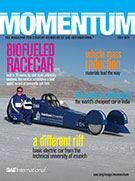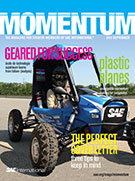Magazine

Tech Briefs April 2018
2018-02-01
Multi-Domain Command and Control (MDC2) Changing the Face of Modern Warfare Loop Thermosyphons Gravity-Driven Two-Phase Cooling for the 21st Century CompactPCI Serial Space A New Embedded System Specification Takes on Extreme Environments Plain Bearings for Aerospace Applications Additive Manufacturing Materials for RF Components NASA CubeSats: Pushing the Boundaries of Technology Content Addressable Memory (CAM) Technologies for Big Data and Intelligent Electronics Enabled By Magneto-Electric Ternary CAM New associative memory approach based on the propagation of spikes provides ultra-low energy search operations. Natural DNA-Based Nonvolatile Resistive Switching Memory Reliable memory devices can be realized within a single macromolecule based on natural DNA.



















